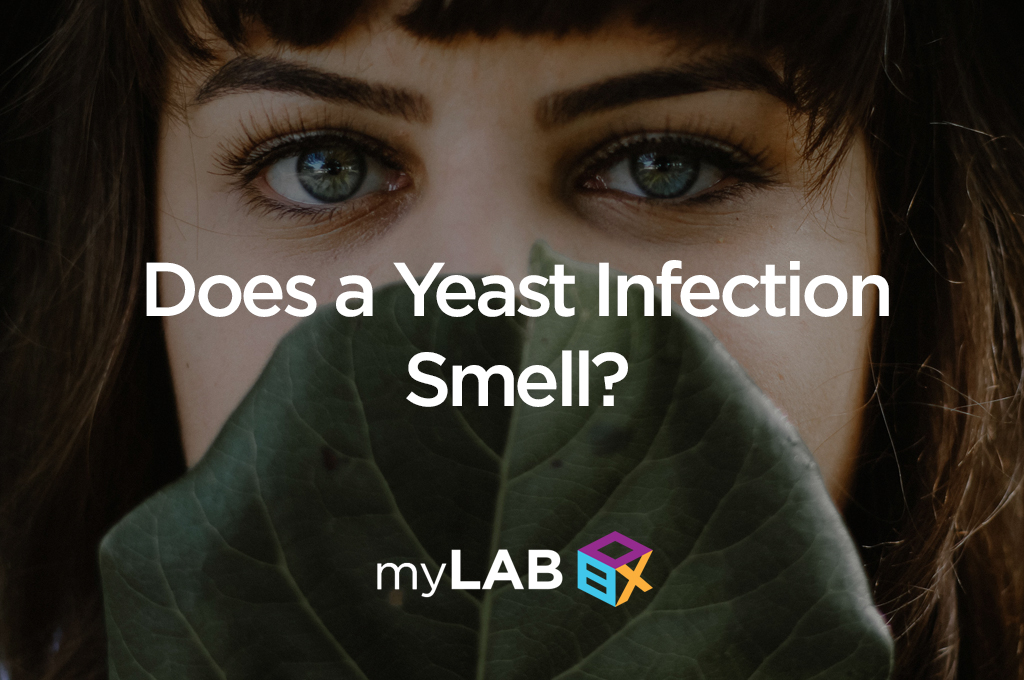Vaginal Yeast Infection

| ❖ Free physician consultation ❖ Mail-in kits for home use ❖ Test in just 5 minutes ❖ Lab results in 2-5 days ❖ 100% pain free ❖ Enjoy free shipping |
To Order By Phone Click Here (800)856-9522
Vaginal Yeast infections occur when the environment inside the vagina changes in a way that encourages the growth of a fungus called Candida. Yeast normally keeps the vagina clean, but too much yeast creates an imbalance that results in infection. This often causes itching, irritation and a change in the texture of your vaginal discharge, but not a change in odor. Three out of every four women experience at least one yeast infection in their lifetime. More than half experience several infections.
Every vagina has a slight scent, but when discharge has a very noticeable smell, or your vagina burns or itches, there is likely a problem. The two most common vaginal infections are Bacterial Vaginosis (BV) and yeast infection, and both have similar symptoms. BV is caused by elevated PH levels in the vagina and can result in a fishy odor, especially after sexual activity. Trichomoniasis, chlamydia and gonorrhea can also alter the smell of vaginal discharge.
Order Your Kit Now & Test AT Home!
Vaginal Yeast Infection Symptoms
Typical yeast infection symptoms include:
- A thick, white vaginal discharge that looks like cottage cheese but has no odor
- Itching, burning, and/or redness and swelling in and around the vagina
- Pain during sex
- Discomfort when urinating
Yeast infections and BV are similar, but when you have a yeast infection the discharge is odorless and has a thicker consistency, similar to cottage cheese. BV will cause a thin, gray discharge and noticeable odor.
It is possible to have a yeast infection and not experience symptoms. These infections are only discovered through testing or physical examination by a doctor, but are not serious and do not require treatment unless you are pregnant.
What Causes a Yeast Infection?
Women of all ages get yeast infections. Many of these women are not sexually active. The best way to avoid a yeast infection is to avoid anything that disrupts the chemical balance of the vagina when possible. This means washing your vaginal area with natural, un-scented soap and water, or water alone. A yeast imbalance can be caused by:
- Hormonal changes (from antibiotic use or having your period)
- Becoming pregnant
- Living with diabetes
- Douching
- Using shower gel or scented soaps
- Spermicidal lubricants
- Latex condoms (if you have a latex allergy)
- Laundry detergent (if you have an allergy to the specific detergent)
- Wearing tight pants
- Not washing after you sweat (often after sex or exercise)
Yeast infections are not contagious and generally won’t spread to a partner during sexual intercourse, but they can make the transmission of other STDs more likely. Scratching an itchy vagina leaves small tears in the skin. STDs that are spread through bodily fluids are more likely to take hold if they come in contact with skin tears.
Testing and Treatment
Most of the time, yeast infections will either clear up by themselves or after a short course of medication. Treatment usually involves a pill taken orally, tablets inserted into your vagina (pessaries) or an external cream.
It is difficult to tell whether you have a yeast infection or an STD without testing because the symptoms are very similar. Untreated vaginal STDs can cause Pelvic Inflammatory Disease (PID) and serious long term damage, including chronic pain, ectopic pregnancy and infertility.
For this reason, we highly recommend testing for common STDs (BV, Trichomoniasis, Chlamydia and Gonorrhea) if you think you have a yeast infection.
Order Your Kit Now & Test AT Home!
Don’t wait, check out all of our at home STD tests.
Reviewed by Luis Ferdinand M. Papa, MD, MHA
References
- . Vulvovaginal candidiasis: clinical manifestations, risk factors, management algorithm. Obstetrics & Gynecology. 1998.
- . Clinical Manifestations of Vaginal Trichomoniasis. Journal of the American Medical Association. 1989.
- . Does Bacterial Vaginosis Cause Pelvic Inflammatory Disease? Sexually Transmitted Diseases. . 2013.
- . Clinical and Microscopic Diagnosis of Vaginal Yeast Infection: A Prospective Analysis. Annals of Emergency Medicine. 1995.
- . Vaginal Yeast Colonization in Nonpregnant Women: A longitudinal Study. Obstetrics and Gynecology. 2004.
- . Vaginal Infections in Adult Women. Medical Clinics of North America. 1990.
Popular Tests

Total Box
14 Panel STD Test
In Stock – Free Shipping
$369 – $399
